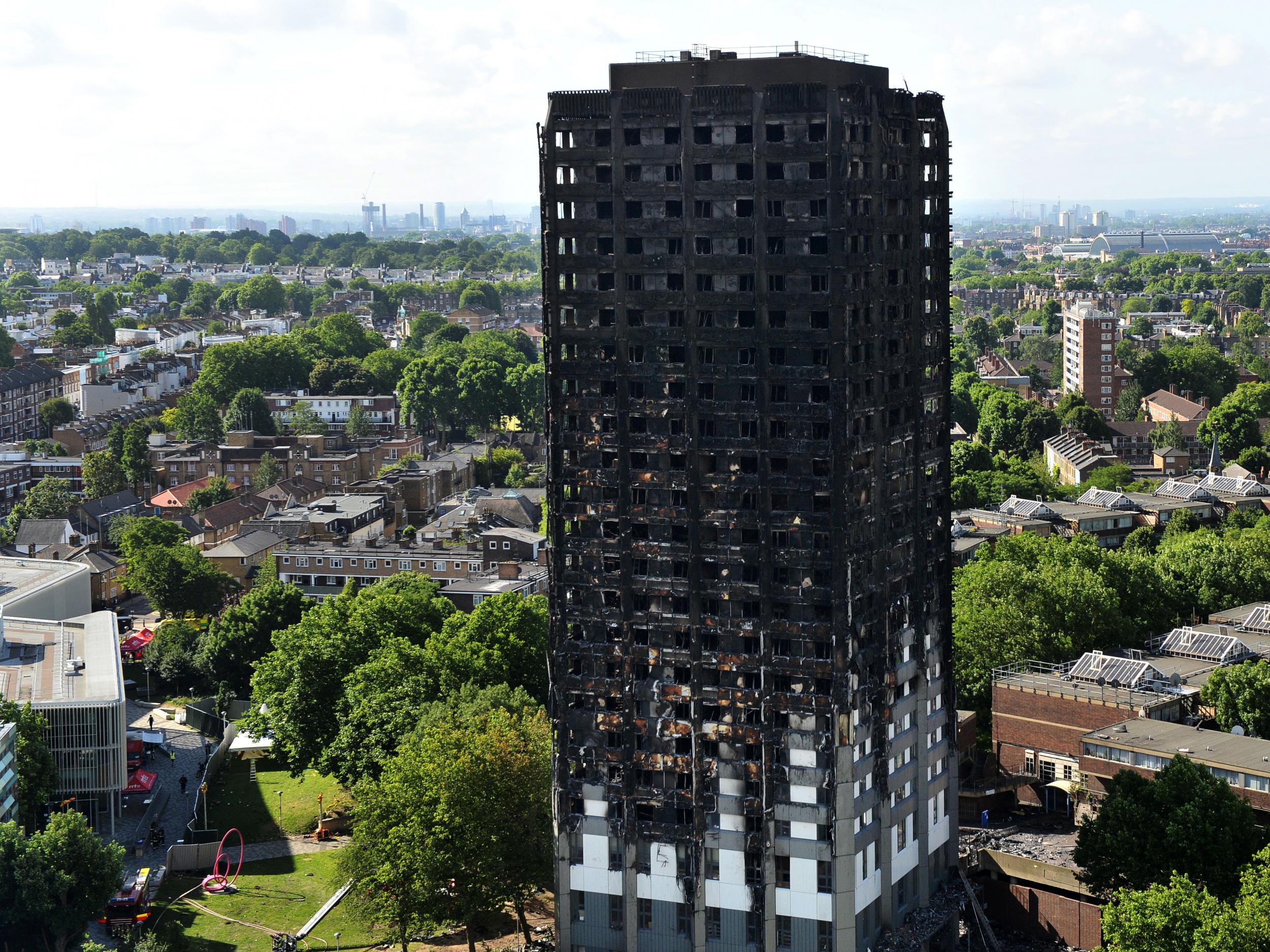Refurbishment turned Grenfell Tower from safe structure into major fire hazard, says leaked report
Blaze would have remained confined to Flat 16 and would not have claimed even a single life if original facade of building had not been re-clad, investigation claims

Your support helps us to tell the story
From reproductive rights to climate change to Big Tech, The Independent is on the ground when the story is developing. Whether it's investigating the financials of Elon Musk's pro-Trump PAC or producing our latest documentary, 'The A Word', which shines a light on the American women fighting for reproductive rights, we know how important it is to parse out the facts from the messaging.
At such a critical moment in US history, we need reporters on the ground. Your donation allows us to keep sending journalists to speak to both sides of the story.
The Independent is trusted by Americans across the entire political spectrum. And unlike many other quality news outlets, we choose not to lock Americans out of our reporting and analysis with paywalls. We believe quality journalism should be available to everyone, paid for by those who can afford it.
Your support makes all the difference.The Grenfell Tower fire that claimed 71 lives would not have spread beyond a single flat if it had started before a refurbishment that saw it clad in flammable materials, a leaked report has revealed.
The findings by fire investigation experts BRE Global, uncovered by the London Evening Standard, reveal serious deficiencies in the installation of the windows, cavity barriers and cladding system, and their failure to meet building regulations.
It states that the fire would have remained confined to Flat 16 — the flat of origin — and would not have claimed even a single life if the original facade of the building had not been re-clad between 2014 and 2016.
The draft report, dated 31 January 2018, was submitted to the Metropolitan Police Service as part of its investigation.
It finds not only that the cladding material and insulation was combustible, but also serious deficiencies in the design and installation of the windows and cavity barriers, which are critical in preventing a chimney-like effect in the event of a fire.
The leaked document reads: “Grenfell Tower, as originally built, appears to have been designed on the premise of providing very high levels of passive fire protection.
“The original facade of Grenfell Tower, comprising exposed concrete and, given its age, likely timber or metal frame windows, would not have provided a medium for fire spread up the external surface.
“In BRE’s opinion…there would have been little opportunity for a fire in a flat of Grenfell Tower to spread to any neighbouring flats.”
Responding to the report, John Healey MP, Labour’s shadow secretary of state for housing, said: “The terrible fire at Grenfell Tower exposed a breakdown in our system of fire-safety checks and controls. It demands a national response from government to make sure it never happens again.
“Ten months on, it is shameful that only seven other tower blocks with dangerous cladding have had it replaced. Ministers need to stop sitting on their hands, and act urgently to help fund essential fire safety work in tower blocks that they know are dangerous.”
Green Party Councillor Sian Berry, who has been trying to get to the bottom of a similarly botched refurbishment at the Chalcots estate in Camden, meanwhile urged that parties needed to show a clear commitment to action in order to ensure that a tragedy similar to the Grenfell Tower fire never happens again.
“The residents of Grenfell were failed by many people - those who chose the materials, planned and carried out the work on their homes, but also by the council and the TMO who were responsible for overseeing the works," she said.
"All of this needs to come out in the inquiry and the people responsible must be fully held to account. Justice for Grenfell cannot just remain a campaign slogan."
In a statement, the Met Police said the force was “disappointed” that an interim draft report appeared to have been leaked and published, adding that to protect the integrity of the investigation they would not confirm specifics of the ongoing probe.
“We have made it clear from the outset that this is a wide-ranging criminal investigation that will examine all possible offences and breaches of regulations. That includes a detailed and thorough examination of how the fire started, and how and why it spread,” it read.
“The investigation focuses upon the original construction of the building, all the changes made over the decades and the most recent refurbishment.”
It explained that this included “not just the cladding system, but all the fire doors, windows, building management, and how all of those elements reacted together”, adding that the force was using a range of specialists and experts to provide the detailed analysis needed as part of the “robust” investigation.
It added: “Our aim is to carry out an investigation that has integrity and if it uncovers evidence that any individual or organisation is criminally culpable we want that evidence to be tested through the judicial system.”
A Kensington and Chelsea Council spokesperson said: “We think the public inquiry and the police investigation are the right places for testing all the evidence as a whole.
“The council is clear – we have handed over thousands of documents – we are committed to finding the truth. We hope full disclosure of all the evidence, tested by the inquiry judge, will deliver the answers to ensure this never happens again.”
Join our commenting forum
Join thought-provoking conversations, follow other Independent readers and see their replies
Comments